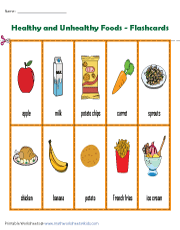
Many states and localities have implemented or are currently planning programs to combat obesity. These efforts can encourage healthy living habits and lower body fat. Local governments can also coordinate these efforts and focus on the local needs of residents. One example is the creation of a community exercise center as part of a local obesity prevention program. This is a good way to get children moving, and to reduce calories. A fitness center is a place that encourages physical activity, which can help keep people in good health.
Numerous state governments have taken steps towards fighting obesity. One example is that the government could establish a sugar reduction target to consumers. This goal is intended to improve people's health. Similar to the above, a portion reduction plan can be used to help achieve this goal. This type program can be promoted to pregnant mothers and mothers of young kids. This program has many benefits, which are available to everyone, including the elderly. Some people may not realize that these strategies are effective in their local communities.

While the federal government has long been committed to improving nutrition and physical fitness, there has been little attention paid to obesity prevention. Because obesity is America's number one health indicator, programs must be tailored to combat it. The President's Council on Physical Fitness and Sports is developing a national initiative, Fit 'n Active Kids, and the Partnership for a Walkable America. America on the Move has been developed by the Partnership for Healthy Eating and Active Living. The program aims to prevent adult weight loss through increased physical activity and decreased caloric intake.
Another funding source for obesity prevention is the CDC grants. These grants are used to support programs for persons with disabilities. The CDC grants program focuses specifically on chronic disease prevention, and building local capacity. It can also assist in the establishment of community demonstration projects. The CDC granted grants to twenty states in FY 2003. The possibility exists that additional states could benefit from the expansion of the grant funds at the state level.
There are many programs in public health to reduce obesity. The CDC also funds states, universities, and communities to promote healthy eating and physical activity. Its website offers information on grantee programs and funding sources. Important to remember that not all types of obesity can be treated by public health programs. Some programs are not able to treat all forms of obesity. They can improve the health of the entire community by addressing the root cause of the disease.

New Jersey's state health department is intensifying their fight against the bulge. It created the Office of Nutrition and Fitness, which coordinates programs to prevent obesity. The state is the nation's leading state in terms of children and adults. It is essential that the government invests in nutrition education due to the large number of obese and overweight children. The health of its citizens is at stake and its efforts should be supported by the federal government.
FAQ
How can you tell what is good?
Your body is your best friend. Your body is the best judge of how much exercise, food and rest you should get. To avoid overdoing it, it's important that you pay attention to what your body is telling you. Be aware of your body and do what you can to maintain good health.
Why should we have a healthy lifestyle to begin with?
Healthy lifestyles lead to happier and longer lives. A healthy diet, regular exercise and good sleep habits will prevent the development of diseases such as heart disease, stroke, cancer, diabetes, and Alzheimer's.
Healthy lifestyles will help us to cope with daily stresses better and improve our mental health. Healthy living will boost self-confidence and make you look and feel younger.
How does an antibiotic work?
Antibiotics are medications that kill harmful bacteria. Antibiotics are used to treat bacterial infections. There are many kinds of antibiotics. Some can be taken orally while others are injected. Others are topically applied.
Antibiotics are often prescribed to people who have been exposed to certain germs. An oral antibiotic might be prescribed to someone who has been exposed to chicken pox. This will prevent the spread of shingles. An injection of penicillin may be necessary to prevent pneumonia if someone has strep.
Children should not be given antibiotics without the consent of a doctor. Children are more likely to experience side effects than adults from antibiotics.
Diarrhea being the most common side effect of antibiotics. Other possible side effects include stomach cramps, nausea, vomiting, allergic reactions, headaches, dizziness, and rashes. These symptoms generally disappear once the treatment has finished.
How often should I exercise?
It is important to exercise for a healthy lifestyle. There is no time limit on how much you should exercise. Finding something that you love and sticking with it is the key.
When you exercise three times per week, aim for 20-30 minutes moderate intensity. Moderate intensity will mean that you'll continue to be exerting yourself afterward. This type works out burns around 300 calories.
Walking is a great option if you are a keen walker. You can do 10-minute walks four days per week. Walking is low impact and easy on your joints.
Jogging is an alternative to running. You can do it for as little as 15 minutes each day. Running is an excellent way to lose weight and tone your muscles.
Start slowly if you aren't used to doing exercise. Begin by only doing 5 minutes of cardio five times per week. Gradually increase duration until you achieve your goal.
What is the difference between a calorie or a kilocalorie.
Calories measure the energy content of food. A calorie is a unit of measure. One calorie equals one degree Celsius of energy to raise water temperature by 1 gram.
Kilocalories can also be used to refer to calories. Kilocalories can be measured in thousandsths of one calorie. 1000 calories are equal to one kilocalorie.
What can I do to lower my blood pressure?
First, you must determine what is causing high blood pressure. You must then take steps towards reducing the problem. This could mean eating less salt, losing some weight, taking medication, and so on.
Also, make sure to get enough exercise. Walking can be a good alternative to regular exercise if time is tight.
If you're not happy with how much exercise you're doing, then you should consider joining a gym. It's likely that you will want to join a gym with other people who are working towards the same goals as you. It's easier for you to exercise if you know that someone will be watching you at the club.
Do I have to count calories?
It is possible to wonder "What diet is best for me?" or "is counting calories necessary?" The answer is dependent on several factors like your current health status, personal goals, your lifestyle, and your preferences.
The Best Diet - Which One Is Right To You?
My personal health, goals and preferences as well as my lifestyle determine which diet is best for me. There are many different diets, some good and some not so good. Some diets work better than others. So what should I do? How can I make the best decision?
This article aims at answering these questions. This article begins with a brief overview of the various types of diets that are available today. Next, we'll discuss the pros and cons for each type of diet. The final step is to determine which one is right for you.
Let's look at some of the main types of diets to get started.
Diet Types
There are three main types: low-fat, high-protein, or ketogenic. Let's briefly discuss them below.
Low Fat Diets
A low-fat diet is one that limits the intake of fats. This is accomplished by decreasing the intake of saturated fats such as butter and cream cheese. and replacing them with unsaturated fats (olive oil, avocados, etc.). A low fat diet is often recommended for those who want to lose weight quickly and easily. However, this kind of diet may cause problems such as constipation, heartburn, and indigestion. It can also lead to vitamin deficiencies, if someone doesn't get enough vitamins in their food.
High Protein Diets
High protein diets are known to restrict carbohydrate intake and promote the consumption of proteins. These diets have higher protein levels than other diets. These diets are designed to build muscle mass and help you burn more calories. Unfortunately, they can't provide adequate nutrition for those who eat regularly. They are not suitable for all people because they can be restrictive.
Ketogenic Diets
The keto diet is also known as the keto diet. They are high in fat, moderately high in protein and low in carbohydrates. These are often used by bodybuilders and athletes because they allow them the ability to train harder and for longer periods of time without feeling tired. But, they require strict adherence to avoid negative side effects like nausea, headaches, and fatigue.
Statistics
- WHO recommends reducing saturated fats to less than 10% of total energy intake; reducing trans-fats to less than 1% of total energy intake; and replacing both saturated fats and trans-fats to unsaturated fats. (who.int)
- This article received 11 testimonials and 86% of readers who voted found it helpful, earning it our reader-approved status. (wikihow.com)
- Extra virgin olive oil may benefit heart health, as people who consume it have a lower risk for dying from heart attacks and strokes according to some evidence (57Trusted Source (healthline.com)
- In both adults and children, the intake of free sugars should be reduced to less than 10% of total energy intake. (who.int)
External Links
How To
27 steps to a healthy lifestyle if your family only eats junk food
The best way to eat healthily is to cook at your home. This is difficult for people who don't know how to cook healthy meals. This article will give you some tips on how to make healthier choices when eating out.
-
Look for restaurants that offer healthy choices.
-
Order salads before you order meat dishes.
-
Ask for sauces that aren't sweetened.
-
Avoid fried food.
-
Ask for grilled meats, not fried.
-
Do not order dessert unless you really need it.
-
You should always have something to eat after your dinner.
-
Always eat slowly and chew your food thoroughly.
-
Take plenty of water with your meals.
-
Do not skip breakfast or lunch.
-
Include fruit and vegetables with every meal.
-
Consume milk and not soda.
-
Try to stay away from sugary drinks.
-
Limit the amount of salt in your diet.
-
Try to limit the number of times you go to fast food restaurants.
-
If temptation is too strong for you, invite someone to be your friend.
-
Make sure your kids don't spend too much time on TV.
-
When you are eating, keep the television off.
-
Do not consume energy drinks.
-
Take regular breaks from the office.
-
Exercise early in the morning.
-
Exercise everyday.
-
Start small and increase your knowledge slowly.
-
Set realistic goals.
-
Be patient.
-
Even if you don’t feel like it, find the time to exercise.
-
Positive thinking is important.